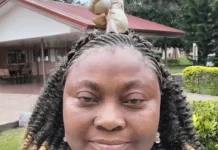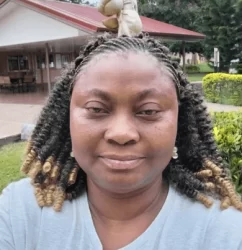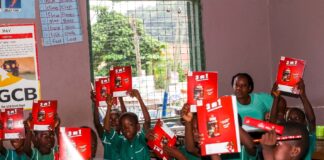Despite an extended government ban on illegal mining and deployment of a joint task force to curb the menace, ‘galamsey’ activities along communities on the River Pra are still prevalent and slowing down efforts to help regain Ghana’s depleting fish stock.
David Koomson, the Shama District co-management committee chairman said, “As for the galamsey issue, I don’t know whether the task force comes here but I can confirm, they are doing it here; along the Pra River, from Obuasi all the way to Shama, you see them doing it.
I am aware the DCE, District Director and Planning officer went through these communities to see some of the machines used in galamsey. So if the task force is truly there, they should come to our aid.”
A visit to communities along the Pra estuary, including Anlo beach and Shama Apo in the Shama District of the Western Region, showed the heavily polluted and brown-coloured muddy waters of the River Pra at the point of intersection with the sea.
The two communities in this area currently host mangrove restoration and woodlot plantation projects under the Sustainable Fisheries Management Project (SFMP), funded by the United States Agency for International Development (USAID). The project is implemented with support from local NGOs, Friends of the Nation (FON) and the Central and Western Fishmongers Improvement Association (CEWEFIA).
Under the SFMP, community members together with representatives from the district assembly have formed a co-management committee to aid in the governance of fishing practices in the area. The local NGOs are able to do this by piloting the co-management policy in these coastal communities while offering training and guidance on best practices for fishing.
At the Anlo beach for example, the Pra Estuary co-management committee, with support from local NGO, Friends of the Nation (FON), have instituted ‘Close Areas’ where fishing is prohibited and ‘Close Seasons’ during which no fishing activity can be undertaken. These measures have significantly improved fish stock in the area which hitherto was in decline and affecting the livelihoods of residents.
Previously, residents of the Anlo beach, a migrant community in the Shama district had been suffering from the effects of overharvesting mangroves and practice of illegal fishing methods. The mangrove ecological area, serves as breeding grounds for different fish species and as such, when overly harvested, do not attract fish to the area to breed. The result is a heavy drop in the volume of fish that is harvested in this area, greatly affecting livelihoods.
For this reason, the SFMP started a restoration project to replant mangroves in a bid to safeguard some of these wetlands. The project had been fairly successful with the formation of a local co-management committee to regulate the operations of community members with regards to fishing practices and also the growing of woodlots to offer alternate sources of wood for fish processing.
However, galamsey activities, threaten to stall the progress made so far. Toxic chemicals used by galamsey operators pollute the River Pra, making it harmful for fish that travel from the marine areas to the wetlands to lay eggs.
David Koomson disclosed that the galamsey workers normally hide behind the pretense of sand winning to engage in the illegal activity.
“The galamsey is led by the Chinese people with the help of the community members because they are getting something out of it. If you go to Nomda, a community between Atwereboanda and Supon Dunkwa, they are there. They are doing it in the form of sand winning to cover up the illegal mining activity,” he lamented.
He said the galamsey operators were well armed and could launch an attack if the community made an attempt to confront them.
“You can’t engage them. You have to use force and if you try they will kill you. At Nomda, you can see many of the ChengFen machines they use in excavation. I am the Pra estuary co-management committee chairman so I’ve been there several times. There’s no police, nothing. And whenever they see you, they point guns at you,” Mr. Koomson bemoaned.
He called on the government joint task force against galamsey, Operation Vanguard, to come to their aid as the illegal mining activities were threatening their livelihoods.
Meanwhile, government says it is ready to roll out the second phase of the fight against galamsey, the Multilateral Mining Integrated Project (MMIP) estimated to cost the country about $100million after instituting a ban on small scale mining.
Dr. Isaac Karikari, coordinator of the MMIP says the government task force approach alone isn’t enough to end the menace and that it needs more concerted effort in eradicating the illegal activity.
The MMIP will include land reclamation, creation of alternative livelihoods for communities involved in illegal mining, dredging of affected rivers and a review of legal framework with regards to licensing.
Depleting Fish Stock
There have been growing concerns over Ghana’s depleting fish stock which is having rippling effects on food sustainability and job creation/unemployment especially in the coastal areas.
According to data Ghana’s 2018 budget statement, growth in the fisheries sector has declined over the years from 4.3% in 2015, rising to 5.7% the following year and then seeing a sharp decline to 3.5% in 2017.
The country is estimated to import over 530, 000 metric tonnes of fish to augment local supply in a bid to meet an annual demand of close to 1million metric tonnes.
The fisheries sector employs about 10% of the country’s population along the entire value chain and therefore a decline in growth has a direct effect on employment mainly along the four coastal regions.
This depletion in fish stock is as a result of illegal fishing practices that has led to low harvests and an increase in imports to meet local demand. There is also the issue of galamsey which pollutes Ghana’s major rivers with chemicals, making the habitat harmful to fishes and affecting the eco-system.
Government is therefore implementing a National Fisheries Management Plan which aims at reducing fishing effort to recover stocks. It collaborates with the Sustainable Fisheries Management Project (SFMP), local NGOs and the Fisheries Commission in working towards this goal.
The Sustainable Fisheries Management Project, is a USAID-funded project aimed at rebuilding targeted marine fish stocks, particularly small pelagic fisheries that are important for food security and have seen major declines over the last ten years.
If Ghana’s government is serious about boosting local fish production therefore, it needs to clamp down heavily on these illegal mining activities as a matter of priority. Ghana stands to lose more revenue through importation which could furthermore affect the jobs of over two million people along the four coastal regions in the country.
A stitch in time, they say, saves nine.










